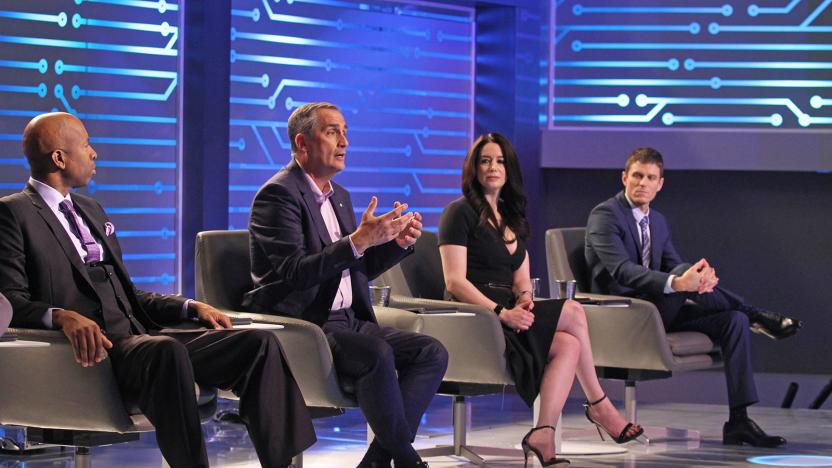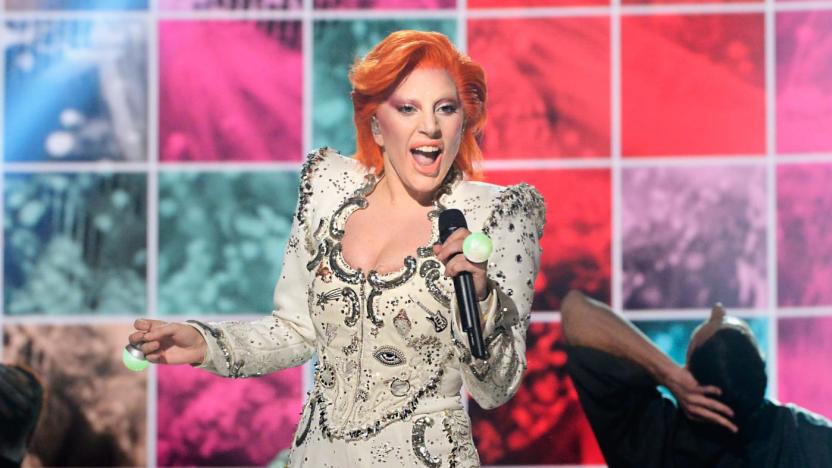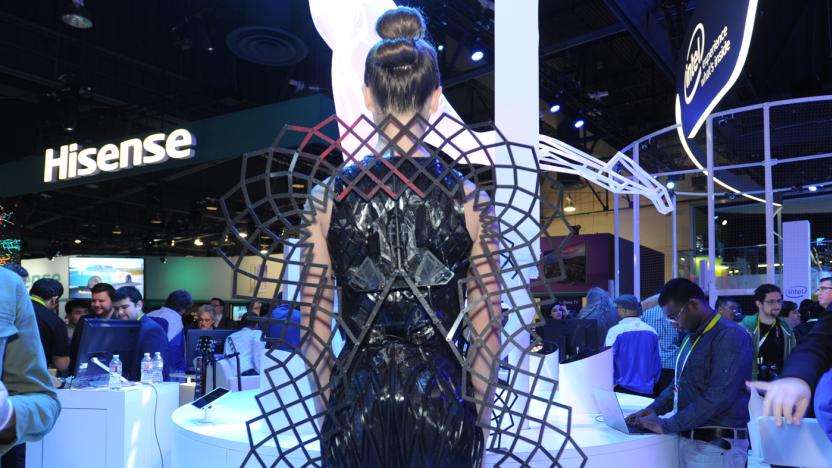curie
Latest

Google’s Curie undersea cable now connects the US and Chile
Curie, a 10,500-kilometer-long undersea cable, now connects Google data centers in the US and Chile. Today, Google announced that the fiber optic cable has been successfully installed and tested. It is expected to begin transmitting data in the second quarter of 2020, and Google is already working on a branch into Panama.

A smart toothbrush just won Intel's maker-themed reality show
Last month, Intel the tried to make inventors cool. The company brought tinkering into prime time with the debut of America's Greatest Makers, a reality TV competition on TBS where 24 teams of inventors have been competing for a $1 million prize. Intel's involvement means two things. For starters, CEO Brian Krzanich is one of the main panelists. Also, to even qualify for the competition, all of these projects had to incorporate Intel's button-sized Curie module, which was designed to power the coming wave of connected objects.

The internet of ratings: How makers became hip enough for reality TV
Technology wasn't always hip, and neither was Intel. The company, known for most of its 48-year history as the leader in PC chips, has in recent years branched out into more cutting-edge areas. That includes mobile, drones, robots and an assortment of wearables running the gamut from a high-tech paintball helmet to an augmented-reality hard hat. Now, in a sign of the times, Intel is joining forces with Mark Burnett, the man behind Survivor, Celebrity Apprentice and The Voice, to bring you a reality show about inventors. America's Greatest Makers, which premieres April 5th on TBS, follows 24 teams competing for a $1 million prize. Though the show follows a format similar to other reality contests, complete with auditions (pitches), guest judges and elimination rounds, the panelists are generally friendlier. Think: the NBA's Kenny Smith and celebrity dealmaker Carol Roth, not a Simon Cowell or Gordon Ramsay.

Inside Lady Gaga's high-tech Grammy performance
When Lady Gaga started singing "Space Oddity" at the Grammys on Monday night, virtual drops of red paint dripped down her face to form a lightning bolt. The image -- a meticulously planned facial projection -- instantly evoked David Bowie's face on the cover of Aladdin Sane. For the six-minute tribute to the legend who passed away a little over a month ago, Gaga employed an assortment of cutting-edge tools to create a kaleidoscopic visual treat.

Intel's conceptual Adrenaline Dress gets upset when you do
Intel tapped Chromat to make its weird and wonderful Adrenaline Dress. Packing Intel's Curie computing module, the garment senses differences in adrenaline, based on your skin conductivity. A network of elaborate 3D-printed panels and a carbon-fiber skeleton then expands outwards, like a mutant porcupine had wings. Interestingly, there's no airpump or servos: it uses alloys that expand and contract to heat that are responsible for the movement. It's another design concept, but this one means to showcase its Curie module, while 2014's spider nightmare focused on RealSense. Curie is a more realistic proposition when it comes to smart garments -- because it's, well, tiny. Photos by Will Lipman.

Intel teams up with ESPN to build connected snowboards
Intel has announced that it's doing deals with two companies that'll put its tiny computer module, Curie, in plenty of action sports gear. The first is with ESPN, the network that's covering the 2016 Winter X Games later this month. The firm is installing Curie modules into the snowboards used for the men's slopestyle and Big Air competitions. The hardware will transmit real-time data about athlete performance, such as jump height, in-air rotation and the force that they hit the ground with. These stats will then be pushed to the TV studio for commentators to bring up when discussing each participant's chances.

Intel Curie opens vents in Chromat's sports bra to keep you cool
Experimental clothing studio Chromat unveiled its Spring/Summer 2016 collection over the weekend, and it includes a 3D-printed dress that expands as your adrenaline rises, plus a cool new sports bra. That's literally cool. Both garments are powered by Intel Curie, a tiny, low-power base for responsive consumer and industrial wearables.

Intel shows off its wearable 'Curie' chip using BMX tricks
At its annual Developer Forum Tuesday, Intel demonstrated a host of new use cases for its button-sized Curie wearable module. Intel has developed the tiny device as a low-power base for consumer and industrial wearables, debuting it first at CES in January and recently shipping the devices to OEMs. "If you have that kind of power in that kind of form factor, possibilities are endless," said Intel CEO Brian Krzanich.

Intel CEO controls a swarm of robot spiders with gestures
Forget the Apple Watch. Forget the Pebble Time. What you really need is a wristband that gives you the power to control an army of scary-looking drones. At IDF in Shenzhen, Intel CEO Brian Krzanich put on a simple Curie-powered wristband with motion detection, which then let him commandeer four robot spiders. With some simple gestures, Krzanich was able to make them stand up, change the LED colors on the drones, make them do "fist" pumps and eventually go back to idling. Sounds cute, right? Maybe not so much when you actually see this in action -- we have a video right after the break.

Intel's button-sized Curie will enable low-power wearables
Intel is going full throttle into wearables with the release of a button-sized piece of hardware called Curie at CES 2015. The module is composed of several elements, the main one being the company's minuscule system on a chip, called Quark. It also comes equipped with a Bluetooth Low Energy radio, six-axis sensor with accelerometer and gyroscope, as well as 384kB flash memory. Intel says Curie hasn't been authorized by the FCC yet, but if all goes well, it's scheduled to ship out in the second half of 2015. Since Quark was designed to run for extended periods and be very energy-efficient, the module can help make it easier (and faster) for manufacturers to design and produce low-power wearables. Plus, since the module is tiny, it can be incorporated into a wide range of objects to create devices such as smart rings and pendants, or even smart buttons.








